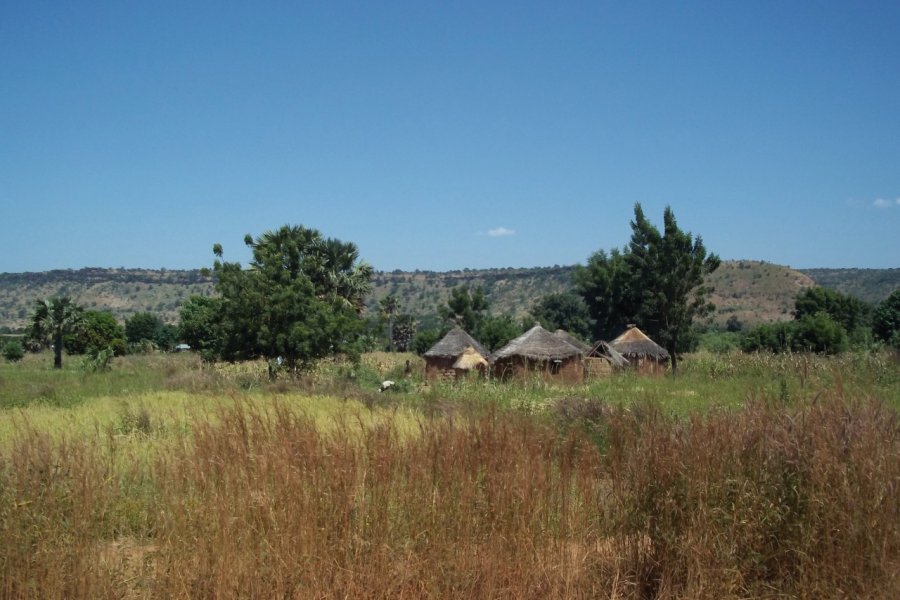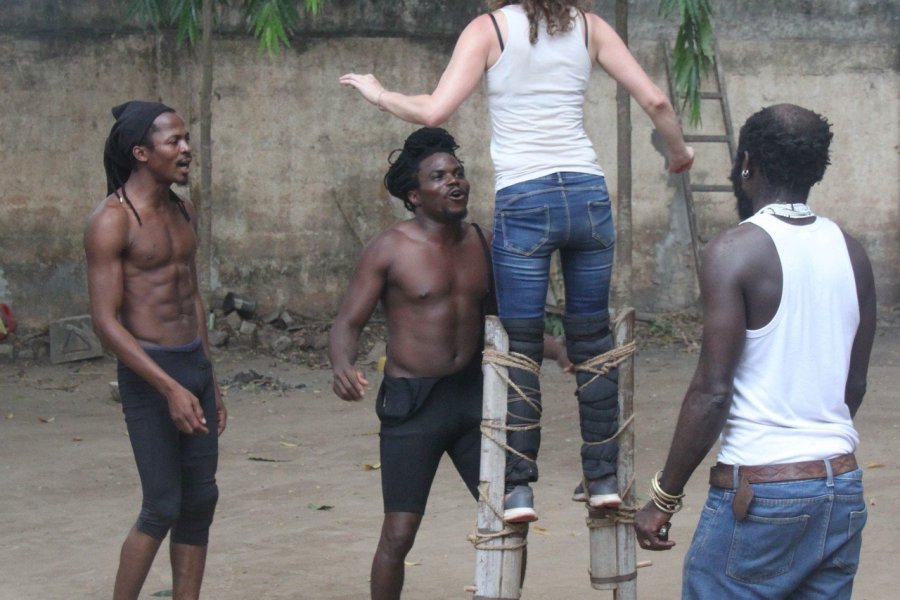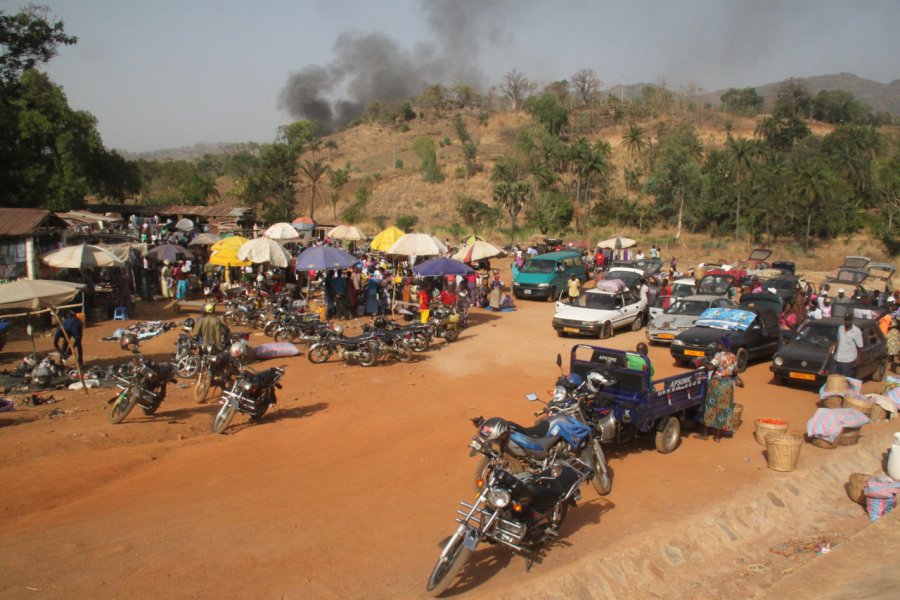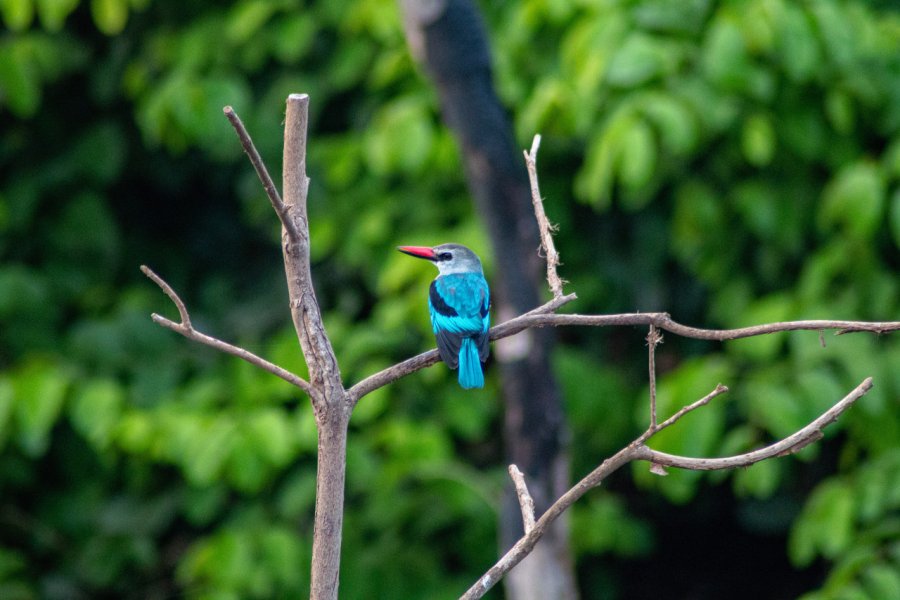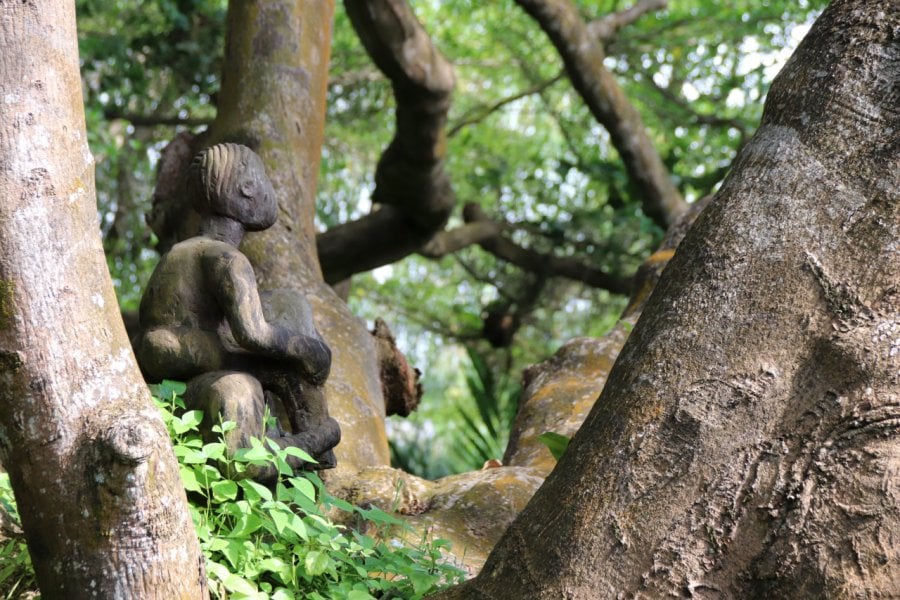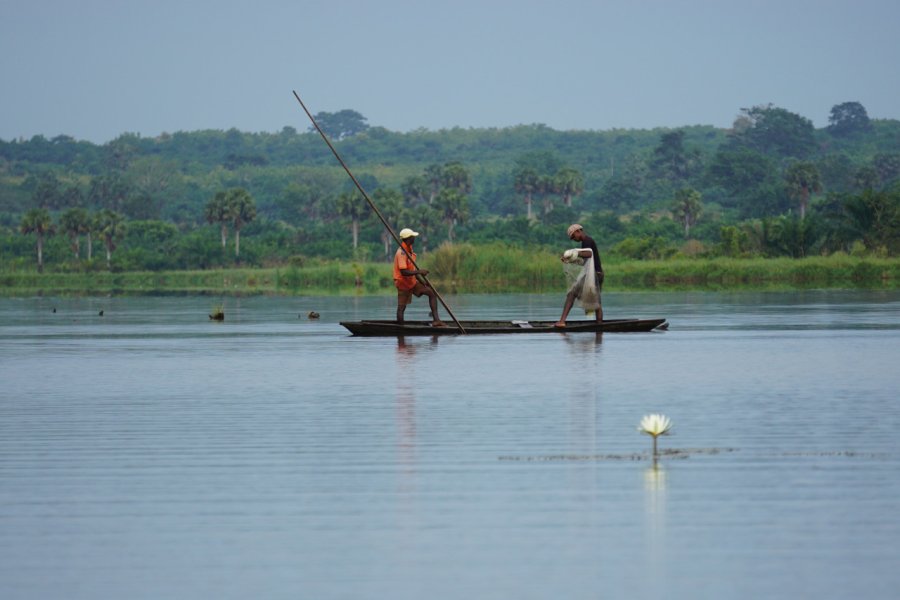Travel guide Togo
With Ghana to the east, Benin to the west and Burkina Faso to the north, overlooking the Gulf of Guinea, Togo is a very small state in West Africa that leaves great memories to those who venture there! The Togolese tourist guide invites us to explore the diversity of Togolese landscapes and cultures, starting with "Lomé la belle", the capital of the country known for the many floors of its Grand Market, its fetish market full of voodoo talismans, but also for its endless nights of celebration. Moving away from the coconut-lined beaches of the coast, you can access the plateaus, waterfalls and green mountains of the interior, dotted with towns and villages, each more welcoming than the next. In the north, we discover the savannah region, before reaching the Nok caves, on the Burkinabe border. Wherever you are in Togo, you are never alone, there is always a good soul to ask you if everything is fine, if you have arrived safely. Welcome! Welcome!
What to see, what to do Togo?
-
Book an activity
-
Customized travel
- The most beautiful cities Togo
When to go Togo ?
If you are wondering when to go to Togo, learn here that the country is subject to two seasons: the dry season, from October to March, and the rainy season, from April to September. However, Togo is pleasant all year round. If each season offers different attractions, the best period to go to Togo is certainly from November to February, taking into account that during the month of December and February, the country can be covered by a kind of fog due to the desert winds, called harmattan. March, April and May are among the hottest months of the year. They are immediately followed by the rainy season which lasts until October. The rainy season is not an obstacle to travel either, as the rains, although heavy, are often short-lived. The vegetation during this period is particularly lush, but some tourist sites become difficult to access. Another highlight of the Togolese calendar is the Festival of Black Gods. This annual international festival is usually held in December. Four days are devoted to cultural celebrations around voodoo beliefs in the localities of Lomé, Aneho, Klouvidonou and Glidji (45 km southeast of Lomé). This festival welcomes followers from Haiti, Brazil, USA, Ivory Coast and Benin. This festival was created by the association Acofin. In 2015, the 10th edition took place. When to go to Togo? All year round, with a preference for the months of October and November.
Suggested addresses Togo
Travel Togo
-
Find a hotel
-
Car Rental
-
International e-SIM package
-
Find a local agency
Find unique Stay Offers with our Partners
How to go Togo
How to go alone
From Western Europe, a round trip to Lomé will cost you, depending on the season but especially on the time of booking (the earlier the better), between 450 € and 1500 €. Depending on your point of departure, it is sometimes interesting to land in Dakar (Senegal) or Abidjan (Ivory Coast) and then take another flight to Lomé.
How to go on a tour
There are travel agencies specialized in organized travel in West Africa and Togo. These service providers have for the most part trustworthy relationships with local partners and are able to offer interesting rates. You can therefore easily find a structure able to offer you an itinerary that suits you, whatever the duration.
How to get around
In Togo, public transport is well developed, as it is the only real means of transport between the main cities. Cab cars are also a widely used means of intercity transport. In the city, they are becoming increasingly rare in favor of motorcycle cabs, called zemidjans, which are faster and less expensive. If you want more autonomy, the roads being in rather good condition, you will opt for a rented vehicle. With driver if possible.
Featured articles Togo
Discover Togo
A small West African state, Togo saw the arrival of numerous ethnic groups fleeing the arrival of Europeans from the 15th century onwards. The Portuguese landed and developed the slave trade along the entire coast of the Gulf of Benin. They were joined by other Europeans, notably the English and the French. Initially under German protectorate, Togo was mandated to France and Great Britain after the First World War. British Togo became part of the Gold Coast, which became Ghana, and the French held elections. Sylvanus Olympio was elected and proclaimed the country's independence. Several coups d'état marked the country until Lieutenant-Colonel Gnassingbé Eyadema took power. In the 1990s, the country was plunged into a deep socio-economic crisis from which it would take a long time to recover. Today, Gnassingbé's son Faure has ruled Togo since 2005.
Pictures and images Togo
The 12 keywords Togo
1. #Ebony

Black ebony is a very hard and brittle wood that was already used in ancient Egypt. Today, it is a rare and expensive wood, much appreciated by artists, which is almost exclusively used for the manufacture of small luxury objects. The production areas are few and almost all located in tropical Africa.
2. #Fufu

Fufu is a yam paste that is eaten with the fingers. It is served with a fish, chicken or beef sauce. The yams, large tubers rich in starch, are first boiled and then pounded into a sticky paste. It is one of the favourite dishes of the Togolese, especially those from the Plateaux region.
3. #Mom
Mama is a term of endearment indicating respect, especially when addressed to a rather older woman. For a young woman, the term tanti is used. Mothers often play an important role in the family and in economic life. They are usually the ones who manage the business. For men, we say papa or tonton.
4. #Maquis

Originally, maquis were small, unpretentious restaurants. Today, most of them have been transformed into maquis bars where you can eat, but also have a drink and dance to the sound of African rhythms and coupe-decale. They are legion along the circular boulevard in Lomé. As soon as the night falls, the atmosphere is guaranteed!
5. #Nana-benz
Sitting in front of their stall covered in wax, a colourful Dutch fabric, the Nana-Benz are one of Togo's local figures. Their trade, which flourished in the 1970s, has since faded somewhat, but they continue to trade, especially at the Lomé market. Today, they are called the Nanettes or the Golden Ladies.
6. #Poule-bicycle
This is the name given to this local breed of chicken, which has long legs and is often seen running across a road. Raised in the open air, it is fed on vegetable matter from crops and households. It will look quite skinny compared to the plump chickens we usually eat. Its flesh is quite tough.
7. #Robusta
Togo is renowned for the quality of its robusta coffee, one of the best in the world. It is mainly used in soluble coffees, blends and espressos. The Togo origin is considered reliable and trustworthy, which is rare among West African countries. Yet it represents only 0.7% of the world market.
8. #Sodabi
Sodabi is made from palm wine, after a natural fermentation during which the sugars in the wine are transformed into alcohol. The word "sodabi" comes from Ghana, from so that be. Some people flavour it with plants with various virtues. Who comes to Togo without tasting sodabi has not come to Togo!
9. #Tchoukoutou
This is millet beer, a drink particularly appreciated by the people of the North. The millet or sorghum is soaked in water for a day, then germination occurs. It is then taken out of the water, spread out and covered with leaves. Then a second cooking takes place leading to fermentation, which gives the tchoukoutou.
10. #Titans
This is the name given by the Togolese to the large, often heavily-laden trucks that travel from the port of Lomé to the landlocked countries of the Sahel. You'll find them all over the country, sometimes broken down. There are often two people making the journey: the driver and the mechanic. The mechanic sometimes has to dismantle the entire engine right on the track!
11. #Vons

Vons originally meant "north-south lane". In a broader sense, they refer to unpaved streets. Vons are often in poor condition, and during the rainy season they become nightmares for vehicles that get stuck in the mud. The holes are often filled with the inhabitants' rubbish.
12. #Zemidjan
These are motorcycle cabs circulating inside the cities. This phenomenon spread from Benin during the 1992 crisis. It is a supplementary profession that rounds out the end of the month. There are about 40,000 of them who officially practice this profession. The zémidjans are also used for political or development campaigns.
You are from here, if...
In any situation, even the most worrying, you know you're going to be okay !
The motorcycle is your mode of transport of choice, even if you're loaded down with a mattress, a mirror or even an exercise bike!
Inland, you always have a niece, uncle or aunt who knows your friend's brother or nephew.
By midday, you're already saying goodnight to family and friends. Yes, half the day has already gone by, and night falls in six hours!
Your favorite dish is without a doubt fufu, the yam paste eaten with the right hand, with all kinds of sauces, without moderation!
If you have any problems, you can call a brother or a friend who, if he's not available, will be happy to put you in touch with one of his acquaintances.
Before or after a meal, youcan 't say no to a little sodabi, the distilled palm wine you drink bottoms up. But in moderation, as it goes straight to the head!

